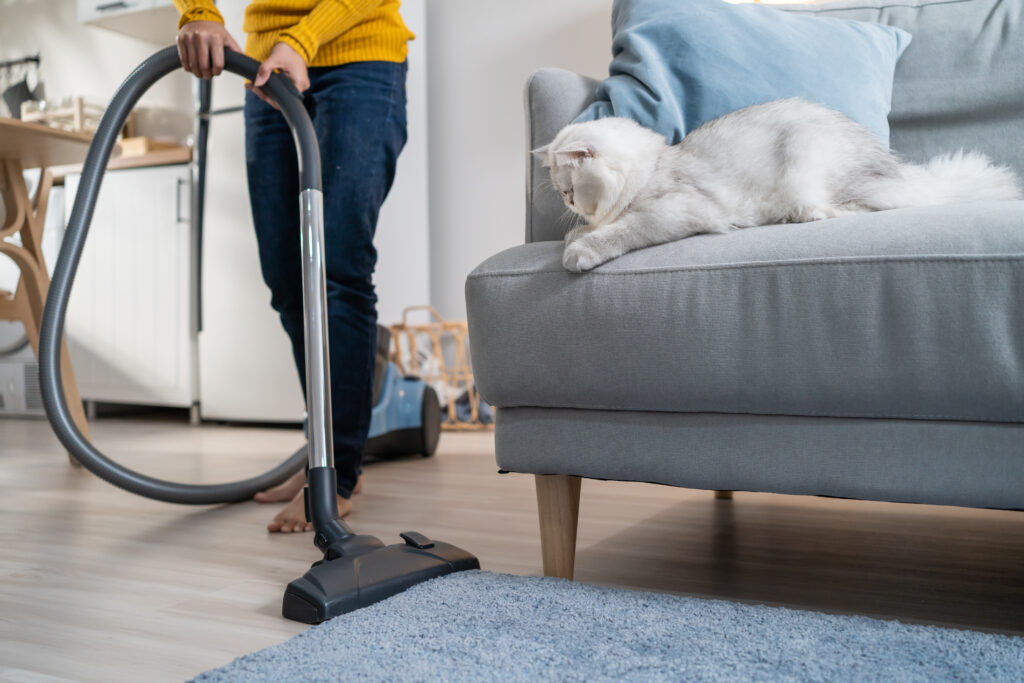Renting a home with pets can be rewarding yet challenging. For many renters, pets are family members, making it essential to find a rental that welcomes them. However, landlords often have concerns about potential damages, noise, and liability, complicating the process. This blog will cover essential tips for tenants looking to rent with pets, including navigating pet policies, finding pet-friendly rentals, maintaining a positive relationship with landlords, ensuring your pet’s comfort, and minimizing any issues that may arise from having pets in a rental.
1. Understanding Pet Policies and Restrictions
The first step in renting with a pet is understanding the specific pet policies of properties you’re interested in. Not all rentals allow pets, and those that do often have restrictions on breed, size, or the number of pets.

Check the Lease Agreement
Always read the lease thoroughly to ensure that pet policies are clearly outlined. If unclear, ask the landlord about their pet rules. Some may require a separate pet addendum.
Breed and Size Restrictions
Many rentals have breed restrictions due to perceived aggressiveness or size limitations. Breeds like Pit Bulls or German Shepherds are often restricted, and larger dogs may not be allowed in apartments or homes with limited space.

Pet Deposits and Fees
Landlords often charge non-refundable pet fees or deposits to cover potential damages. Be prepared for extra monthly “pet rent” to cover cleaning and maintenance costs.
2. Finding Pet-Friendly Rentals
Finding pet-friendly rentals can be difficult, but it’s not impossible. Use these strategies:

Use Pet-Friendly Listing Websites
Many online rental platforms offer filters to help you search specifically for properties that allow pets. Take advantage of these filters to streamline your search for a pet-friendly home.
Provide Pet References
If you’ve rented before, provide references from previous landlords or neighbors who can vouch for your pet’s behavior. This can ease landlords’ concerns
Pet Resume
Stand out by creating a “pet resume” with details about your pet’s breed, age, weight, vaccination history, and behavior. Include any training certifications or notes from your vet
3. Ensuring Your Pet’s Comfort in a New Home
Moving can be stressful for pets, so ensuring their comfort in the new environment is crucial.
Pet-Proof the Home
Ensure the new space is safe for your pet by checking for hazards such as exposed wires or toxic plants.
Create a Designated Pet Space
Set up a designated area for your pet with their bed, toys, and food to help them adjust quickly. This gives them a sense of security.


Routine is Key
Maintaining regular feeding, walking, and playtime schedules helps reduce anxiety during the transition and provides comfort for pets in a new environment.
4. Maintaining a Good Relationship with Your Landlord
Renting with pets requires extra care to maintain a positive relationship with your landlord. By being responsible and proactive, you can show you’re a good tenant, even with pets.
Be Transparent
Always be honest about having a pet. Sneaking in a pet could result in penalties or eviction. If you have an emotional support animal (ESA), communicate this, as ESAs may have legal protections.
Minimize Pet-Related Damage
Keep up with your pet’s grooming to reduce shedding, trim their nails to avoid scratches on floors, and clean accidents immediately to prevent permanent damage.


Regular Cleaning
Make sure to vacuum regularly, especially if your pet sheds. Clean up after your pet in shared spaces like gardens or courtyards.
Address Noise Issues
Pets can be noisy, especially dogs. Ensure your pet is trained to minimize barking, especially if you live in close quarters with neighbors. Consider a bark collar or trainer if noise becomes an issue.
5. Legal Rights and Responsibilities
Tenants with pets should also understand their legal rights and responsibilities, as laws regarding renting with pets vary by area.
Fair Housing Laws
If you have an emotional support animal or service animal, fair housing laws may protect your right to keep them, even in pet-free properties. Provide proper documentation if needed.
Renter’s Insurance
Some landlords may require renter’s insurance to cover pet-related incidents, such as damage or injury. Check whether your policy covers liability for accidents caused by your pet.
Final Thoughts
Renting with pets can be challenging, but with careful planning and responsible pet ownership, you can find a rental that welcomes both you and your furry friend. By understanding pet policies, finding pet-friendly properties, and maintaining a good relationship with your landlord, you can ensure a positive rental experience. A little extra effort can show you’re a responsible tenant, which can help with future rentals. Ultimately, renting with pets requires balancing your needs, your pet’s well-being, and your landlord’s expectations.
At Deityvillas, we transcend ordinary living, making life easy and smooth. Our vacation homes are more than just stunning; they are designed to offer an exceptional experience tailored to your desires.
Book directly on our website, www.deityvillas.co, to access exclusive deals and enjoy a seamless booking process. Have questions or need assistance? Our dedicated team is here to help at 229-222-5199.
Experience a vacation that exceeds expectations. Start planning your perfect getaway with Deityvillas today your ideal escape awaits.









